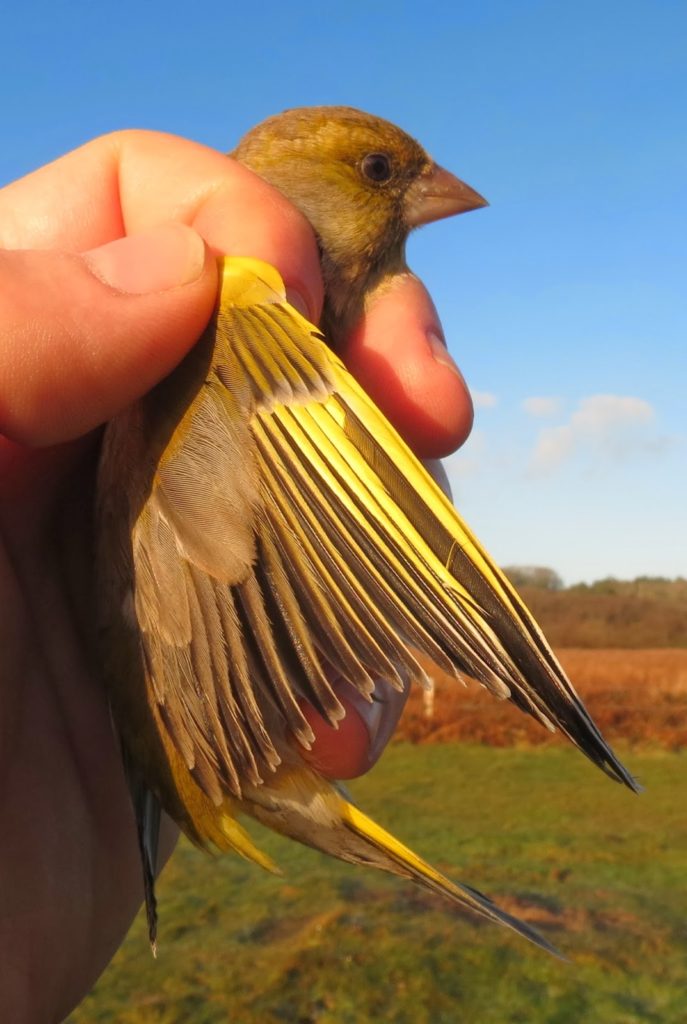A break in the weather provided a window to get a final visit to Oxwich Marsh completed in 2013. Very light south-westerly winds meant the nets hardly moved in the first few hours of daylight, but the increasingly open skies made them more visible, and the catch slowly declined as the morning wore on. Some short watches over the previous two weeks had indicated that there were finches and reed buntings coming in to the feeding station, and as a result it was hoped that there would be a fairly varied catch.
Seventy birds of the following species were trapped (the proportion of the birds that were retraps is indicated by brackets): great spotted woodpecker 1, dunnock 2 (2), robin 4 (3), Cetti’s warbler 1 (1), blue tit 48 (33), great tit 4 (3), chaffinch 3 (0), greenfinch 3 (0), goldfinch 1 (0), reed bunting 3 (1).
The catch was interesting from a number of perspectives. Firstly, the majority of blue tits, great tits and Cetti’s warbler being re-trapped are now ringed birds. This suggests that most of the locally resident population of these species has now been trapped. Secondly, a blue tit and a dunnock of at least 3 years of age were trapped, while a re-trapped reed bunting was at least four years of age based on the date of first ringing and its age at that time. Finally, we caught the first greenfinches at the marsh in over ten years. An adult male greenfinch is shown below.
Observations during the breeding season do not suggest that greenfinch breeds in or adjacent to Oxwich Marsh. In previous years, ringing has been concentrated between the spring and early autumn, when birds are not likely to be using the area. In 2013, the establishment of a feeding station, and the extension of ringing into the winter, has resulted in flocks of greenfinches moving in.
Greenfinches can be sexed throughout the year, based on between-sex differences in the extent (and depth of colour) of the yellow in the primaries and on the tail feathers. They can also be aged based on moult limits in the wing (juveniles may retain one or more old greater coverts and alula feathers and always retain their primary coverts). In males ageing birds can be fairly straightforward, but in some females colour contrasts are subtle. One complication in ageing birds is that birds of both sexes can replace all or part of their tail during post juvenile moult, so only retained tail feathers are useful in ageing.
No goldcrest or long-tailed tit flocks were seen during the morning, but overhead flocks of siskin and smaller numbers of redpoll were moving. The number of teal on the marsh had also increased, and snipe were noted throughout the session.
Many thanks to Charlie Sargeant and Heather Coats for coming along on Sunday.
Happy New Year.
Owain Gabb 01/01/2014
